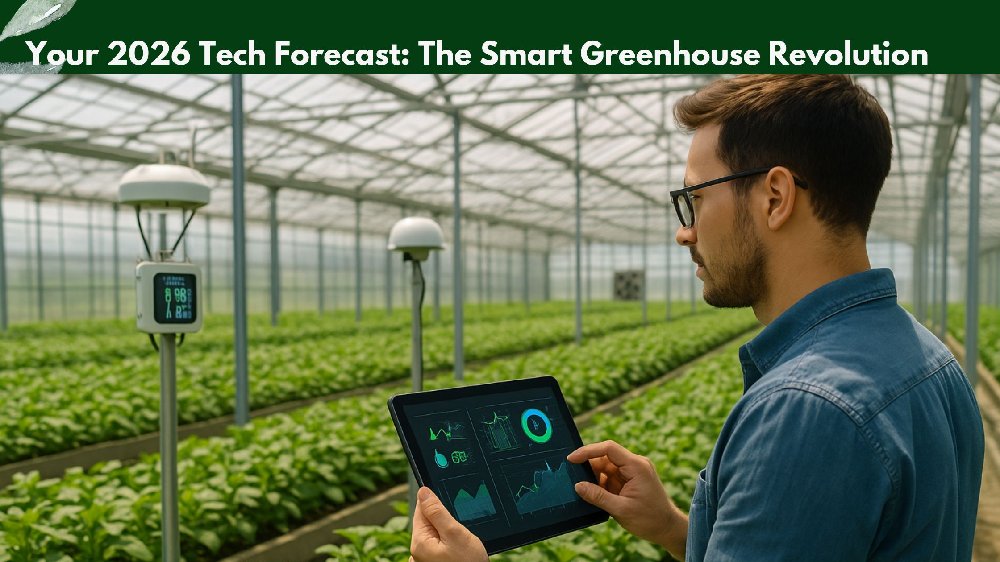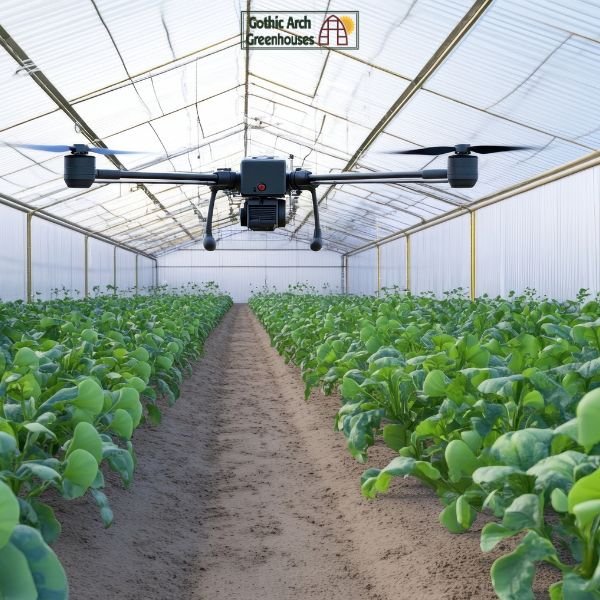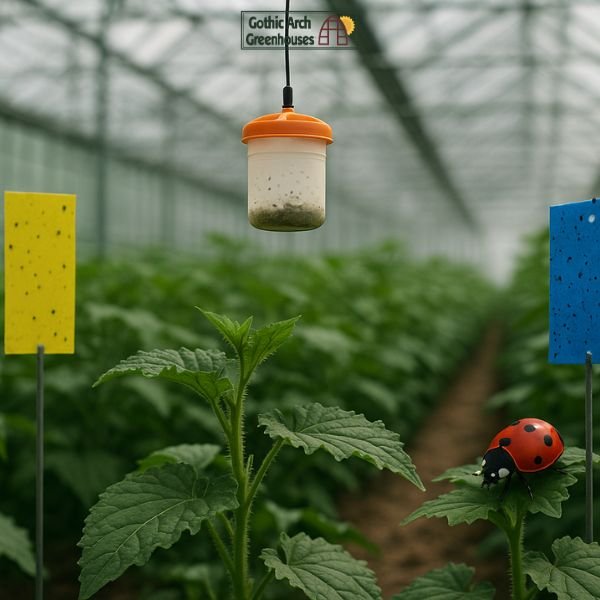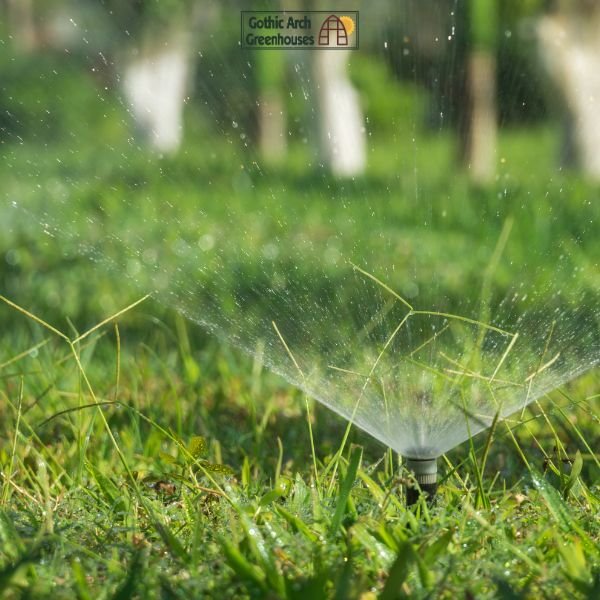Position Your Operation at the Forefront of Agricultural Technology The global smart greenhouse market is projected to grow from $3.04 billion in 2025 to $4.59 billion by 2030, driven by the convergence of IoT, AI, and sustainable growing practices. Forward-thinking growers who adopt these technologies now will establish market leadership and operational excellence for years to come. IoT sensors and AI monitoring systems are transforming how we manage greenhouse environments, creating unprecedented efficiency and yield optimization. Start with a phased approach: environmental sensors first, then automation controls, and finally AI analytics. Explore our smart greenhouse starter kits designed for seamless integration. Advanced integrated pest management (IPM) moves beyond chemicals to sustainable biological solutions that protect crops and ecosystems. Begin with a pest audit and introduce compatible beneficial insects. Our biological control consultants can design a custom IPM program for your operation. Sustainable water practices combined with precision technology are reducing consumption while improving plant health and yield. Start with a water audit and install smart meters. Rainwater harvesting systems can be integrated with existing irrigation systems for immediate water savings. Next-generation energy systems are reducing operational costs while minimizing environmental impact. Conduct an energy audit and prioritize high-return investments, such as LED lighting. Our energy consultants can help identify the best solutions for your climate and crop types. Evaluate your current infrastructure, identify technology gaps, and develop a strategic implementation plan with clear ROI targets. Start with a controlled pilot project to test technologies, train staff, and measure results before full-scale deployment. Scale successful technologies across your entire operation, integrating systems for maximum efficiency and data insights. Are smart greenhouses expensive to set up? Do smart greenhouses work in cold climates? Can smart greenhouses grow organic food? Do smart greenhouses require internet access? How long does it take to see ROI? Is smart greenhouse farming sustainable? The Smart Greenhouse Revolution is reshaping the future of agriculture. By combining automation, AI, IoT sensors, and sustainable design, smart greenhouses deliver higher yields, reduce resource usage, and make farming more resilient. Whether you're a commercial farmer or a hobbyist grower, embracing innovative greenhouse technology can unlock new opportunities and help feed the world responsibly. Position your operation at the forefront of agricultural technology with our expert guidance and cutting-edge solutions. Schedule a consultation to develop your customized technology roadmap for 2026 and beyond.
2026 Technology Forecast: The Smart Greenhouse Revolution
Where Technology Meets Horticulture
Key Trends Shaping 2026
1. Smart Greenhouse Automation

Core Technologies:
Implementation Strategy:
2. Biological Pest Control Systems

Innovation Highlights:
Implementation Strategy:
3. Advanced Water Management

Key Technologies:
Implementation Strategy:
4. Energy Optimization & Renewables

Innovation Highlights:
Implementation Strategy:
Market Outlook & Growth Projections
Implementation Roadmap for 2026
Phase 1: Assessment & Planning
Phase 2: Pilot Implementation
Phase 3: Full Integration
FAQs About The Smart Greenhouse Revolution
Costs vary, but starter kits are increasingly affordable.
Yes—climate control systems ensure stable growing conditions year-round.
Absolutely! Technology enhances natural growing processes.
Many systems work offline but benefit from internet-enabled data logging.
Most farmers report improved yield and savings within 1–3 years.
Yes—it saves water, reduces waste, and increases efficiency.Ready to Lead the 2026 Greenhouse Revolution?
- 2025
- 2024
- 2023
- 2022
- 2021
- 2020
- 2019
- 2018
- 2017
- 2016
- 2015
- 2014
- 2013
- 2012
- 2010
Blog
The "Specialized Grower" Approach
As winter approaches, many greenhouse owners face the annual dilemma: how to maintain profitability when traditional crops like tomatoes become challenging to grow. The solution lies in shifting your focus to high-value, cold-tolerant crops that thrive in winter conditions.
This guide is designed for commercial growers and serious hobbyists looking to implement a profitable winter production strategy using either hydroponic or soil-based systems.
Beyond Tomatoes: How to Grow Profitable Winter Greenhouse Crops
Turn your greenhouse into a year-round business. Learn how salad greens, microgreens, and culinary herbs can boost winter profits and keep your production steady all season long.
The Specialized Grower Advantage
As temperatures drop, many greenhouse owners face the same challenge — maintaining profitability when warm-season crops like tomatoes and peppers slow down. The key to success is focusing on cold-tolerant, high-value crops that flourish during the winter months.
This guide is for commercial growers and passionate hobbyists looking to build a consistent income stream using hydroponic or soil-based greenhouse systems — even when it’s freezing outside.
Top Winter Crops for Greenhouse Profitability
Not all crops slow down in the cold. Here are three proven performers that deliver quick returns, steady demand, and year-round growth potential.

Salad Greens
Cold-hardy greens like lettuce, kale, spinach, and arugula are winter staples. They grow fast, tolerate cooler temperatures, and command premium prices at local markets.
Essential Supplies
- High-density planting trays or NFT hydroponic channels
- Quality potting mix or balanced nutrient solution
- Row covers or low tunnels for frost protection
- Supplemental LED lighting for consistent growth
- Thermal blankets for sub-freezing nights
- pH and EC meters for nutrient monitoring

Microgreens
Microgreens deliver one of the best profit-per-square-foot ratios. With short growth cycles and minimal space requirements, they’re ideal for winter greenhouse production.
Essential Supplies
- Standard 10"x 20" shallow growing trays
- Specialized microgreen growing medium
- High-germination seeds (broccoli, radish, sunflower, pea shoots)
- Tiered shelving systems with built-in lighting
- Fine mist sprayers or bottom-watering setups
- Sharp scissors or knives for precise harvesting
- Eco-friendly packaging for retail or restaurant sales

Culinary Herbs
Fresh herbs like cilantro, parsley, mint, and chives sell consistently through winter. Restaurants, grocery stores, and CSA programs value local, greenhouse-grown herbs for freshness and reliability.
Essential Supplies
- 4–6" pots or deep-flow hydroponic systems
- Well-draining potting soil or rockwool cubes
- Herb-specific nutrient formulations
- Ventilation systems for humidity management
- Benches or rolling carts to maximize space
- Propagation mats for faster germination
- Pruning shears for ongoing harvests
Master the Two-Season Strategy: Grow Year-Round
Successful greenhouse growers don’t shut down for winter — they adapt. By planning a two-season strategy, you can maintain consistent production and make the most of your infrastructure investment.
For New Growers: Build a Strong Winter Foundation
- Start small — focus on one or two profitable winter crops
- Invest in reliable greenhouse heaters and insulation
- Use supplemental LED lighting to extend day length
- Establish local partnerships with restaurants or markets early
For Experienced Growers: Scale with Precision
- Use succession planting for continuous harvests
- Adopt vertical or tiered growing systems
- Install automated environmental controls for accuracy
- Create value-added mixes (herb bundles, salad blends) to raise profits
- Explore advanced hydroponic systems for faster turnover
Essential Infrastructure for Cold-Weather Growing
- Double-layer poly or insulated panels for better energy retention
- Thermal mass materials (stone, water barrels) to stabilize temps
- Backup heating for power or weather emergencies
- Durable greenhouse frames rated for snow and wind
- Energy-efficient LED lighting tuned to your crop spectrum
Ready to Grow Through Winter?
With a brilliant crop selection, efficient heating, and the proper greenhouse setup, your winter season can be your most profitable time of year.
Explore our full range of professional greenhouse structures and winter growing equipment to prepare for success.
Explore Winter Growing Solutions
